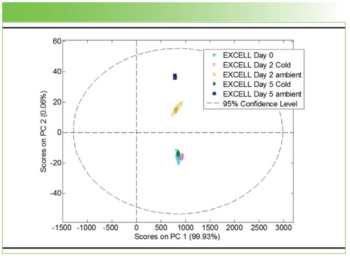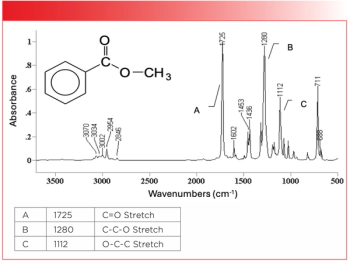Key Points
- Researchers from Jiangnan University integrated Raman spectroscopy with advanced deep learning models to accurately predict acid value (AV) in palm oil during thermal processing, significantly outperforming traditional chemometric methods.
- The CNN-LSTM model achieved an Rp² of 0.9978 and an RPD of 21.21, showing its robustness and potential to monitor additional oil degradation markers beyond AV.
- The study highlights the method's transferability and potential to streamline quality assurance in food manufacturing.
A recent study examined a new method that improves the monitoring of cooking oils. This study, which was published in the journal Food Chemistry, explored how this new method can detect acid value (AV) in palm oil using Raman spectroscopy and deep learning (1). This study was conducted by a team of researchers at Jiangnan University and the Jiangsu Provincial Research Center of Light Industrial Optoelectronic Engineering and Technology. Their findings reveal how the integration of Raman spectroscopy and deep learning models is an improvement over traditional chemometric methods.
Why is acid value important?
Acid value is an important component in edible oils. The AV serves as an indicator of the degradation level of edible oils during processes like frying (1,2). Although traditional chemometric techniques have been effective in the past, the potential complexity of the spectral data, especially under high-temperature conditions, has hindered the wider adoption of these traditional methods.
How did the researchers overcome these limitations?
In their new method, the researchers used three advanced deep learning frameworks in conjunction with Raman spectroscopy to monitor palm oil during thermal excitation. The three deep learning frameworks used in this study were convolutional neural network (CNN), long short-term memory (LSTM), and transformer models.
Among the models tested, the hybrid CNN-LSTM architecture delivered the best results. It achieved a predicted coefficient of determination (Rp²) of 0.9978, a root mean square error of prediction (RMSEP) of 0.0015, and a residual predictive deviation (RPD) of 21.21 (1). These metrics far surpassed those of traditional chemometric methods, such as partial least squares regression (PLSR), competitive adaptive reweighted sampling-PLS (CARS-PLS), and random forest-PLS (RF-PLS) (1).
What were some key features of the study’s experimental design?
The study’s experimental design included the thermal oxidation of palm oil samples at various stages, simulating typical frying scenarios. Raman spectra were collected from each sample, and the deep learning models were trained to predict AV based on spectral characteristics (1). Principal component analysis (PCA) and t-distributed stochastic neighbor embedding (t-SNE) were also employed to visualize the data’s structure and further validate the models’ performance in capturing complex chemical patterns (1).
Although AV remains a widely used indicator for oil quality, the researchers acknowledge some limitations of strictly using AV for this purpose. For one, the researchers note that AV does not fully capture the spectrum of degradation products that arise during thermal processing, such as secondary oxidation products, oxidized triglycerides, and polymer compounds (1).
However, the deep learning models demonstrated in this study are inherently flexible and can be trained to monitor these additional markers, presenting an exciting avenue for future research.
What are the key takeaways from this study?
There are several key takeaways researchers can take from this study. First, the study shows how the approach can allow for the transferability of deep learning models. With minimal retraining, the same model could be adapted to monitor other critical quality parameters (1).
Second, the study’s findings show that the method presented here can serve as a blueprint for future method development in this space. The synergy between Raman spectroscopy and deep learning could streamline quality control in food manufacturing, reducing reliance on time-consuming and labor-intensive laboratory tests (1). Further validation with more diverse data sets and other edible oils beyond palm oil can not only drive more improved models in the future, but also the one presented in the study.
With the ongoing development of this method, the researchers anticipate expanding its applications to cover a broader spectrum of chemical indicators, thereby setting a new benchmark for edible oil analysis (1).
References
- Liang, S.; Chen, G.; Ma, C.; et al. Quantitative Determination of Acid Value in Palm Oil During Thermal Oxidation Using Raman Spectroscopy Combined with Deep Learning Models. Food Chem. 2025, 474, 143107. DOI: 10.1016/j.foodchem.2025.143107
- Gu, Y.; Shi, L.; Wu, J.; et al. Quantitative Prediction of Acid Value of Camellia Seed Oil Based on Hyperspectral Imaging Technology Fusing Spectral and Image Features. Foods 2024, 13 (20), 3249. DOI: 10.3390/foods13203249






